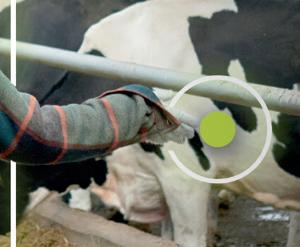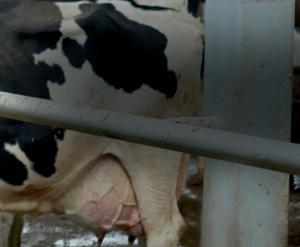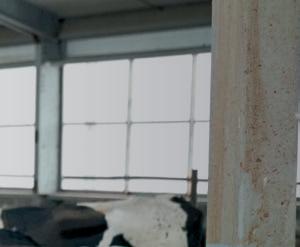
2 minute read
Improving cow health during the transition period

He said: “Cows are brought to Millands just two to three weeks before calving as we do not have space to move them any earlier.
“Calving lasts about 12 weeks and about three-quarters of all the cows calve in the first six weeks.”
Better quality
As soon as the cows are moved to Millands for the ‘close-up’ period immediately prior to calving they go onto a better quality mineral and the ‘close-up’ diet of silage, topped with ground straw and magnesium chloride to prevent milk fever.
Wallace said: “The week before calving they will be started on a blend, which aims to improve colostrum quality, along with the silage. Ideally we would want them all on the same diet for the last three weeks, but the cost makes this prohibitive.”
After calving, cows are fed a diet of magnesium oxide, hay, silage and ground straw.
Also speaking at the on-farm event, vet Alan Walker, of Armour Veterinary Group, said that straw fed straight was not an attractive feed, and ground straw rather the more traditional chopped straw, when mixed through with hay or silage was more palatable and ensured the cow was eating a constant, albeit low energy, ration which helps prevent over fat cows.
Wallace said they also tried to maintain intakes by pushing up silage several times a day to allow the cattle constant access to feed which helps to ensure the rumen is full.
In addition, they placed great importance on the availability of fresh water at all times.
Metabolic profiling of the herd is done annually through blood tests, which the brothers said was a useful management tool to assess a cow’s diet and analyse the nutritional and health status of the herd.
Metabolic profiling

Last year, metabolic profiling was carried out in March when three-quarters of the herd had calved and the cows were in three groups: cows which were 14-17 days calved; cows which had been calved an average of 30 days; and the dry group, which were 10 days away from calving.
The urea levels of the cows that had been calved an average of 30 days were all abnormal.
Prof Alastair Macrae, of the Dairy Herd Health and Productivity Service at the Royal (Dick) School of Veterinary Studies at University of Edinburgh, who was presenting the findings, said he was not concerned about this, and attributed it to the late spring.
The freshly calved cows, which had access to silage had more normal results. However, three-quarters of this group also had very high non-esterified fatty acids levels, which he said was an early indication of ketosis and a negative
Farm facts
■ 600 Holstein Friesian cows milked twice a day
■ Average annual yields of 5,400 litres per cow, of which 3,575 litres are from forage, at 4.2 per cent butterfat and 3.5 per cent protein
■ Milk is sold to Muller
■ After calving, cows are kept in two herds, split between Millands and another grazing block and milking parlour at neighbouring Netherlands Farm
■ Millands, a 345-hectare (853acre) farm was purchased by the family from a local estate just over 80 years ago; following expansion, there are now three generations of the family involved at the farm energy balance, as a result of high milk production which exceeded the energy intake.








Importance

Prof Macrae emphasised the importance of making sure the cow kept its energy up by encouraging an increase of the intake of silage topped with magnesium chloride. He also advised trying to limit pen movements and overcrowding at this time.

Wallace said: “At this point, one of the biggest challenges faced at calving time was lack of manpower where we need more people working on the farm.”






As labour supply remains a challenge for the agricultural industry, understanding how to best attract future employees is key to combating the hidden costs of staff turnover. Katie Fallon reports.










